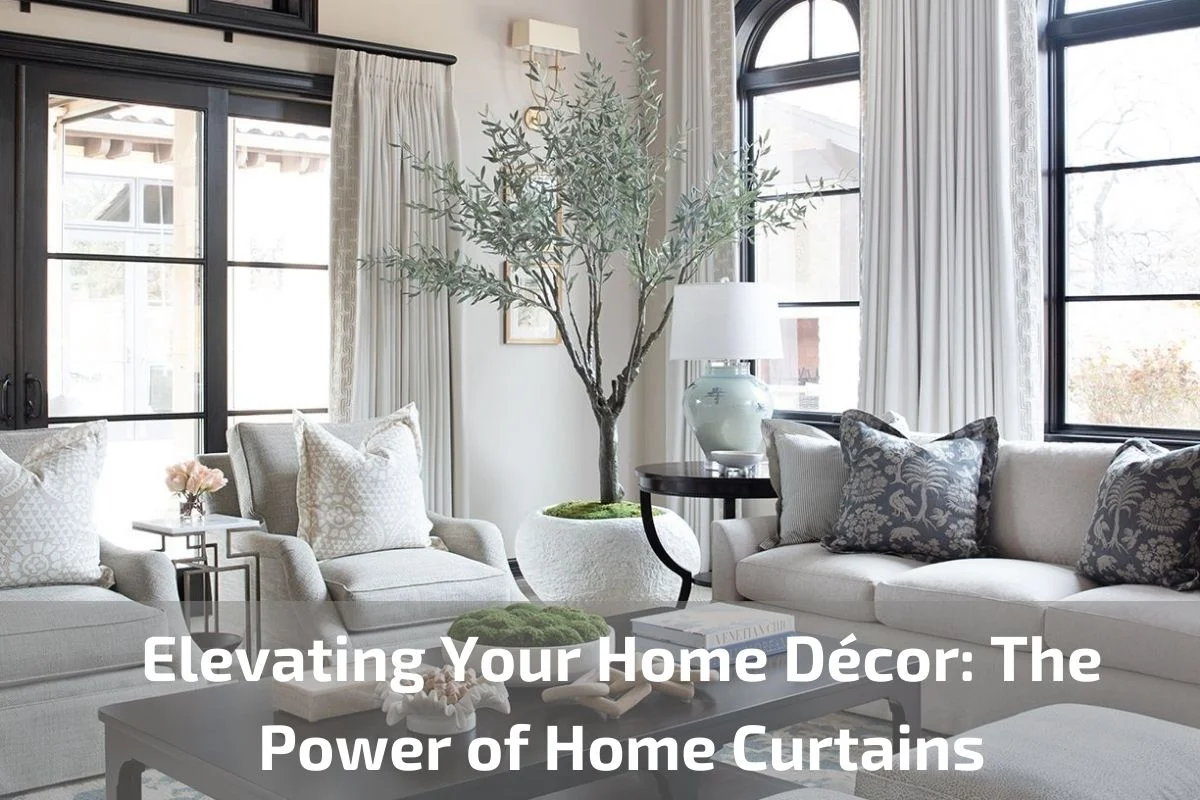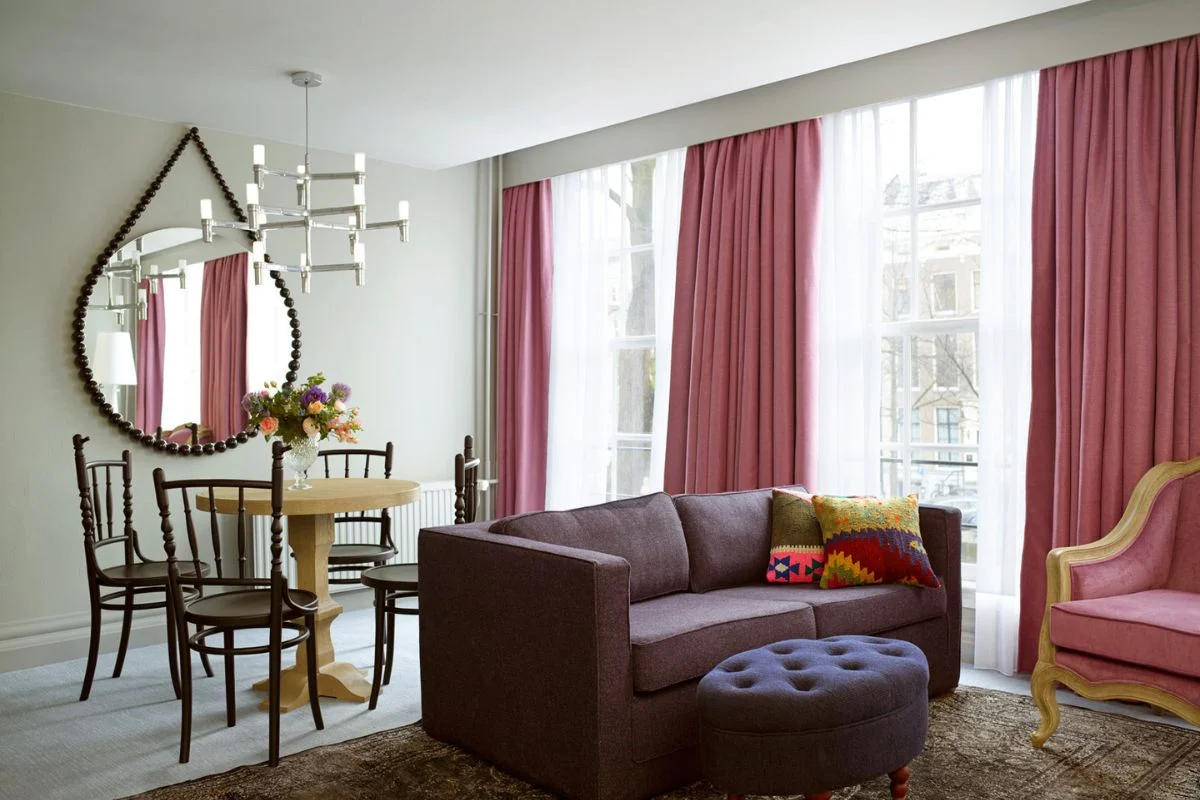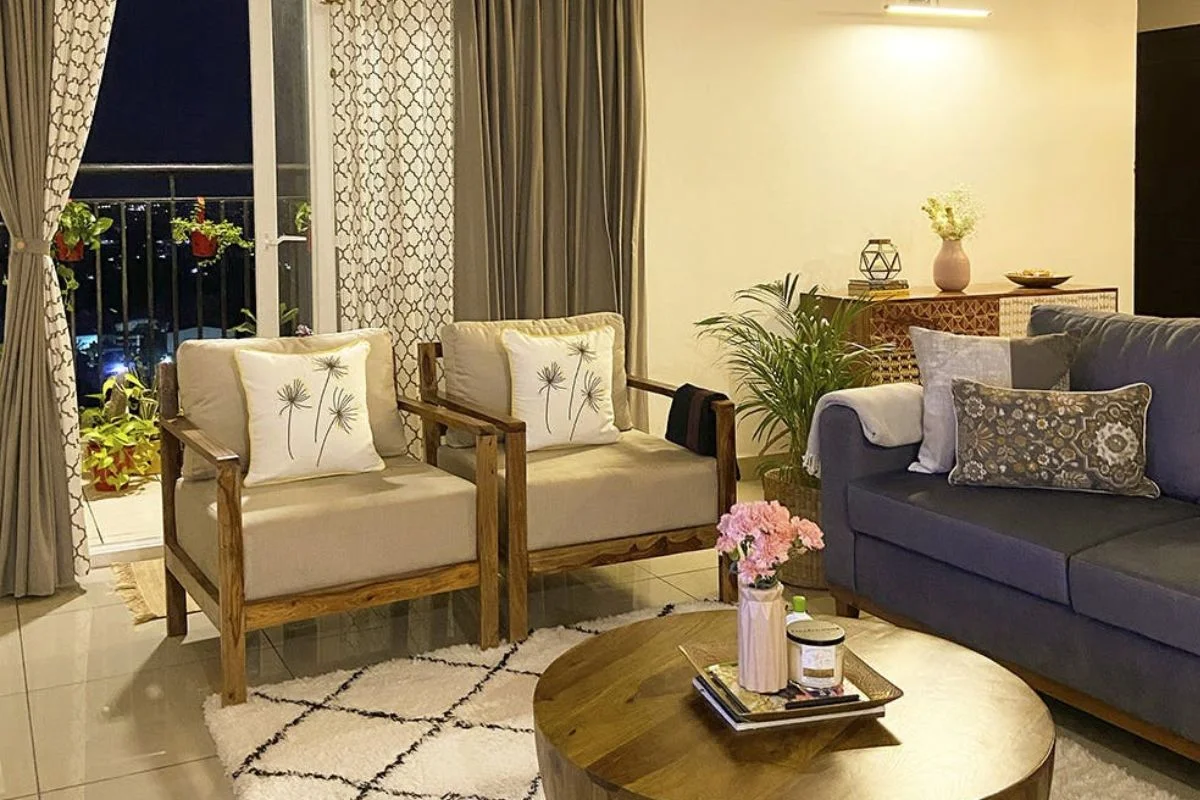In the realm of home décor, few elements have the transformative power of home curtains. These seemingly simple window coverings possess the ability to elevate the ambiance, style, and functionality of any living space. From providing privacy and controlling light to adding texture and color, home curtains play a multifaceted role in enhancing the overall look and feel of a room.
Beyond their practical functions, home curtains serve as design statements that reflect the homeowner’s taste, personality, and lifestyle. Whether you prefer sleek and modern, cozy and traditional, or eclectic and bohemian, there are curtains to suit every aesthetic preference and interior style.
In this guide, we’ll explore the unparalleled impact of home curtains on interior design, delving into the various ways they can enhance the beauty and comfort of your living space. From choosing the perfect fabric and style to mastering the art of installation and maintenance, we’ll uncover the secrets to harnessing the full potential of home curtains to create a home that truly reflects your unique vision and personality.
Importance of Home Curtains in Interior Design
Home curtains serve as indispensable elements in interior design, contributing to the overall aesthetic appeal, functionality, and ambiance of living spaces. Here’s why home curtains are crucial in interior design:
Enhancing Visual Appeal: Home curtains add depth, texture, and visual interest to rooms, elevating the overall aesthetic appeal of interior spaces. Whether they feature bold patterns, rich textures, or subtle hues, curtains have the power to enhance the visual appeal of windows and tie together the room’s decor.
Creating Ambiance: Curtains play a significant role in setting the ambiance and mood of a room. Sheer, lightweight curtains can create an airy and ethereal atmosphere, while heavy, opaque curtains can evoke a sense of coziness and intimacy. By controlling natural light and privacy levels, curtains help establish the desired ambiance for different areas of the home.
Controlling Light and Privacy: One of the primary functions of home curtains is to control the amount of natural light entering a room and provide privacy when needed. Curtains can be adjusted to filter sunlight, reduce glare, and create a comfortable environment for various activities, such as reading, working, or relaxing. Additionally, they offer a sense of security and seclusion by obstructing views from outside.
Adding Style and Personality: Home curtains serve as opportunities to infuse style and personality into interior spaces. With a wide range of fabrics, colors, patterns, and designs available, curtains can be customized to complement existing decor themes, reflect personal tastes, and showcase individuality. They are versatile design elements that can instantly transform the look and feel of a room.
Softening Architectural Features: Curtains have the ability to soften the hard lines and edges of architectural features, such as windows and doorways, creating a more inviting and welcoming atmosphere. By adding softness and warmth, curtains can enhance the overall comfort and livability of living spaces, making them feel more inviting and cozy.
Providing Versatility and Flexibility: Home curtains offer versatility and flexibility in interior design, allowing homeowners to easily update and refresh their decor without major renovations. By simply changing the curtains, the entire look and feel of a room can be transformed, making them a cost-effective and practical design solution.
Completing the Look: In many cases, curtains serve as the finishing touch that completes the overall look and feel of a room. They act as the frame for windows, tying together various design elements, furniture pieces, and accessories to create a cohesive and harmonious interior aesthetic.
Choosing the Perfect Home Curtains
Selecting the ideal curtains for your home involves careful consideration of several factors to ensure they complement your interior design while fulfilling practical needs. Here’s a guide to help you choose the perfect home curtains:
Consider the Room: Assess the function and mood of the room where the curtains will be installed. For instance, bedrooms may require curtains that offer privacy and light control, while living rooms may benefit from curtains that enhance natural light and add decorative flair.
Fabric Selection: Choose curtain fabrics based on the room’s purpose and desired aesthetic. Lightweight fabrics like linen and cotton are ideal for creating an airy feel and allowing natural light to filter through. Heavier fabrics such as velvet or brocade offer better insulation and can add a sense of luxury to formal spaces.
Color and Pattern: Consider the existing color scheme and decor of the room when selecting curtain colors and patterns. Neutral tones like white, beige, and gray can complement a variety of design styles and allow other elements in the room to stand out. Bold patterns and vibrant colors can make a statement and add personality to the space.
Length and Fullness: Determine the desired length and fullness of the curtains based on the size and scale of the windows and the room’s overall proportions. Floor-length curtains create a sense of drama and elegance, while shorter curtains can make ceilings appear higher and windows larger. Opt for fullness to achieve a luxurious, draped look when the curtains are closed.
Curtain Style: Choose a curtain style that complements the room’s decor and architectural features. Options include panels, drapes, sheers, valances, and blinds. Consider the functionality of each style and how it aligns with your needs for light control, privacy, and aesthetic appeal.
Hardware and Accessories: Select curtain rods, finials, and tiebacks that complement the style and finish of your curtains and existing decor. Choose durable hardware that can support the weight of your curtains and withstand daily use. Consider decorative elements such as tassels, fringe, or trim for added visual interest.
Try Before You Buy: Whenever possible, bring home fabric samples or swatches to test how they look in your space before making a final decision. Consider how different lighting conditions throughout the day may affect the appearance of the curtains.
Budget Considerations: Establish a budget for your curtain project and prioritize factors such as fabric quality, customization options, and installation costs. Keep in mind that investing in high-quality curtains can enhance the overall look and feel of your home and provide long-lasting value.
Exploring Home Curtain Styles and Designs
Home curtains come in a variety of styles and designs, each offering unique aesthetics and functionality to enhance your living space. Here’s a closer look at some popular home curtain styles and designs to consider:
Panel Curtains: Panel curtains, also known as drapery panels, are versatile and timeless window treatments. They consist of single or multiple fabric panels that hang vertically from a curtain rod. Panel curtains offer a classic and elegant look, with options for various fabric types, lengths, and patterns to suit different decor styles.
Drapes: Drapes are similar to panel curtains but are typically made from heavier fabrics and feature more elaborate designs. They often extend from ceiling to floor, creating a dramatic and luxurious effect. Drapes can add warmth and sophistication to formal living rooms, dining rooms, and bedrooms, especially when paired with decorative hardware and tiebacks.
Sheer Curtains: Sheer curtains are lightweight and translucent, allowing soft diffused light to filter through while maintaining privacy. They are perfect for rooms where you want to maximize natural light and create an airy, ethereal ambiance. Sheer curtains come in a variety of colors and textures, making them versatile options for both modern and traditional decor.
Valances: Valances are decorative fabric treatments that cover the top portion of windows. They add visual interest and style to windows without obstructing views or blocking light. Valances can be tailored, pleated, scalloped, or draped, offering endless design possibilities to complement your home decor.
Cafe Curtains: Cafe curtains, also known as tier curtains, cover only the bottom half or two-thirds of windows, providing privacy while allowing ample natural light to enter the room. They are commonly used in kitchens, bathrooms, and breakfast nooks to create a cozy and inviting atmosphere. Cafe curtains come in various styles, including ruffled, tailored, and embroidered designs.
Roman Shades: Roman shades are fabric window treatments that fold up in horizontal segments when raised and lay flat when lowered. They offer a clean and tailored look, combining the softness of curtains with the functionality of blinds. Roman shades come in a range of fabrics, colors, and patterns, making them suitable for both casual and formal spaces.
Blinds: While technically not curtains, blinds are popular window treatments that offer practical light control and privacy. They come in a variety of materials, including wood, faux wood, aluminum, and vinyl, offering options to suit different decor styles and budgets. Blinds can be customized with slat sizes, colors, and operating mechanisms to fit your specific needs.
Layered Curtains: Layering curtains involves combining different types of window treatments, such as sheer curtains with drapes or valances with blinds, to create a customized look that offers both style and functionality. Layered curtains add depth and dimension to windows while allowing for versatile light control and privacy options.
Benefits of Home Curtains
Home curtains offer numerous advantages beyond their aesthetic appeal, contributing to the comfort, functionality, and ambiance of living spaces. Here are some key benefits of using curtains in your home:
Light Control: Curtains allow you to control the amount of natural light entering your home. By adjusting the curtains, you can regulate brightness, reduce glare, and create a comfortable environment for various activities such as reading, working, or watching television.
Privacy: One of the primary functions of curtains is to provide privacy by blocking the view from outside. Curtains offer a sense of security and seclusion, allowing you to enjoy personal space without worrying about prying eyes or unwanted intrusions.
Temperature Regulation: Curtains help insulate your home by trapping heat in the winter and blocking out heat in the summer. Thick, insulated curtains can prevent drafts and reduce energy costs by maintaining a stable indoor temperature, making your home more comfortable year-round.
Sound Absorption: Certain types of curtains, particularly those made from heavyweight fabrics or lined with insulating materials, can help absorb sound and reduce noise levels within your home. This is especially beneficial in busy urban areas or homes with open floor plans where noise can be a concern.
UV Protection: Curtains can help protect your furniture, flooring, and other belongings from harmful UV rays that can cause fading and deterioration over time. Light-filtering curtains block a portion of UV radiation while still allowing natural light to illuminate your home.
Enhanced Decor: Curtains serve as decorative accents that add texture, color, and pattern to your home decor. They can complement existing furniture and accessories, tie together different design elements, and create visual interest in any room.
Flexibility and Versatility: With a wide range of styles, fabrics, and designs available, curtains offer endless possibilities for customization and personalization. You can easily update the look and feel of your home by changing curtains to reflect seasonal trends or evolving tastes.
Improved Sleep Quality: Blackout curtains are designed to block out light and create a dark, conducive environment for sleep. By minimizing external light sources, blackout curtains can help promote deeper, more restful sleep, making them ideal for bedrooms and nurseries.
Easy Maintenance: Curtains are relatively easy to clean and maintain, especially when compared to other window treatments like blinds or shutters. Most curtains can be machine washed or dry cleaned, making them a practical and low-maintenance option for busy households.
Affordability: Compared to other home improvement projects, installing curtains is a cost-effective way to update your home decor and enhance its functionality. With a wide range of price points available, you can find curtains to fit any budget without compromising on quality or style.
Maintaining Your Home Curtains
Proper maintenance of home curtains is essential to preserve their appearance, functionality, and longevity. Here are some tips for maintaining your home curtains:
Regular Cleaning: Establish a routine cleaning schedule for your curtains to prevent the buildup of dust, dirt, and allergens. Vacuuming your curtains with a soft brush attachment can help remove surface dust and debris. For heavier soiling, follow the manufacturer’s instructions for washing or dry cleaning.
Spot Cleaning: Address stains and spills promptly to prevent them from setting into the fabric. Use a mild detergent solution and a clean cloth to gently blot the affected area. Avoid rubbing or scrubbing, as this can damage the fabric fibers. Test any cleaning solution on a small, inconspicuous area first to ensure compatibility with the fabric.
Professional Cleaning: Consider professional cleaning services for heavily soiled or delicate curtains that require specialized care. Professional cleaners have the expertise and equipment to safely clean and restore curtains to their original condition without causing damage.
Care Labels: Always refer to the care labels and manufacturer’s instructions before cleaning your curtains. Some curtains may be machine washable, while others may require dry cleaning or spot cleaning only. Following the recommended care instructions can help prevent shrinkage, color fading, and other damage.
Avoid Direct Sunlight: Minimize prolonged exposure to direct sunlight, as UV rays can cause curtains to fade and deteriorate over time. Use sheer curtains or window treatments with UV-blocking properties to protect your curtains and furnishings from sun damage.
Rotate Curtains: Rotate your curtains periodically to ensure even exposure to light and wear. If possible, alternate between different sets of curtains to extend their lifespan and maintain their appearance.
Steam Cleaning: Steam cleaning is an effective method for refreshing and removing wrinkles from curtains without the need for washing. Use a handheld steamer to gently steam the curtains while they are hanging to restore their shape and appearance.
Ironing: If your curtains are wrinkled after washing or steaming, iron them on a low heat setting with a pressing cloth to protect the fabric. Avoid using high heat or direct contact with the iron, as this can scorch or damage delicate fabrics.
Hardware Maintenance: Regularly inspect and clean curtain rods, rings, and hooks to ensure smooth operation and prevent rust or corrosion. Lubricate moving parts with a silicone-based lubricant if necessary.
Storage: Store unused curtains in a cool, dry place away from direct sunlight to prevent discoloration and damage. Avoid folding or compressing curtains for long periods, as this can cause creases and wrinkles to set in.
Conclusion
Home curtains play a vital role in enhancing the comfort, style, and functionality of living spaces. From controlling light and privacy to adding aesthetic appeal and personality, curtains contribute to the overall ambiance and ambiance of your home.
ABU DHABI SHOWROOM
Abu Dhabi Island, Al Salam Street
Behind Abu Dhabi Municipality and FAB bank
Heirs. Of Ibrahim G. Sultan Al Suwaidi Building
ONLINE FURNITURE – Showroom no. S2
Abu Dhabi,
Landline: 02 55 66 748
Phone : 056 600 9626, 0567 023 023, 02-67-21-444
DUBAI BRANCH
Risala Furniture LLC 9 24 A street, Al Quoz 1 Dubai – United Arab Emirates
Landline: 04-2959449
Phone: 056-600-9626




